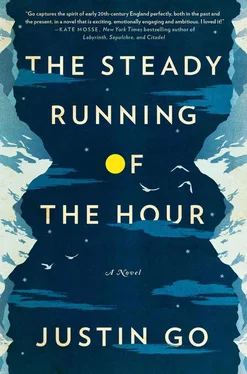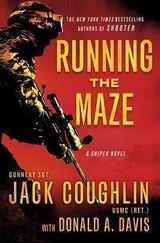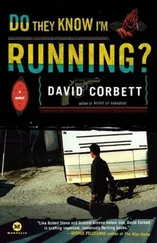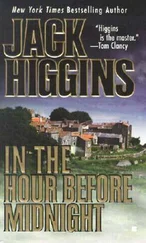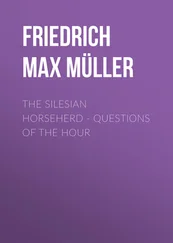— All right.
Ashley coughs for a spell and sits up, taking the canteen from inside his sleeping bag. He tugs the cork out and inverts the bottle, but only a few drops trickle into his mouth. The snow has not yet melted. He plugs the canteen and lies down.
— There’s more, Ashley wheezes. Something happened before we sailed.
— The girl?
— She sent me a telegram. I hadn’t heard from her in years.
— What did it say?
— Hardly anything.
Price shifts in his bag. — Are you all right? Shall I light the lamp?
— I’m fine. I’ll clam up.
Ashley has another coughing fit. He hacks some fluid into his handkerchief and lies back down, breathing more freely than he has for hours.
— Maybe you ought to go after her, Price says.
There is a long pause.
— It wouldn’t work.
— Perhaps you ought to try anyway.
— Perhaps.
— We really ought to sleep.
— I know.
Ashley coughs and turns onto his back. He feels the sting of an ice fragment melting through his silk undershirt into his ribs.
— How old are you, Ashley? Twenty-eight?
— Twenty-nine.
— That’s still young.
— It doesn’t feel young.
— Of course it doesn’t, Price says. But it might if you let it.
Ashley laughs and the laugh turns into a wheeze. He says good night to Price and pulls up the collar of his sleeping bag, trying to recall the exact words of the telegram. There is the sound of flapping canvas again and he knows another guyline has come loose in the wind.

The flight lands at Keflavík Airport, thirty miles from the Icelandic capital. I look out the window as the airplane taxis slowly across the tarmac. The runway is slick with rainfall, the grass a deep rich green.
The halls of the terminal are silent. There are huge circular windows, portholes to the wild country beyond. Collecting my bag from the carousel, I pass through an empty customs gate. At an ATM I withdraw nearly the last of my savings in a currency I’ve never seen before.
I step outside the automatic doors into the open air. It’s bracingly cold. In one day I’ve gone from autumn to nearly winter. I board an express bus for the city center, but halfway through the journey the driver pulls onto the shoulder without explanation.
The passengers get off and stand around the barren strip of highway, smoking cigarettes or talking in low voices. From each side the black asphalt drops to fields of broken lava crowned with moss and lichen. I pass from the shelter of the bus and the wind strikes me, flapping my jacket and nearly toppling me. The driver leans against the bus behind me lighting a cigarette. He sweeps his hand forward, signaling I ought to walk on.
I step off the road onto jagged slabs of lava, straining to keep my balance as I hop from one stone to another. The fragments are jet-black, the lichen green and brown and orange. I walk twenty yards, then fifty. I swivel around. The lava and lichen stretch out the same in every direction.

Reykjavík is a strange and lonely place. It seems barely a city at all, only an arrangement of colorful houses perched around a bay, their corrugated roofs standing sentry against the driving wind and rain. Dark and savage hills loom above, foreboding the wildness of the country beyond.
One walk along the windswept harbor and I know I’ll need a warmer coat. I rummage through an indoor flea market, choosing an olive green German army parka. The elderly vendor accepts my money and peers knowingly at me through thick glasses, as if we share some deep secret.
— It is very warm, she confides.
But when I step outside, I realize the coat barely protects me from the freezing wind.
I’m staying at a new youth hostel on a hill, spotless and shining. On a dining table in the glass-enclosed kitchen I make a list of all the ways I might progress in my search. The list has twenty-three items. I have eleven days until October 7.
I speak to jewelers and antiques dealers, even a curator at the National Museum of Iceland. They tell me little of Ísleifur Sæmundsson, only the same few anecdotes that appear in auction catalogs and surveys of Icelandic crafts, none of which I can read myself. These sources record that Ísleifur was born in 1872 and died in 1936. He made elegant pieces of jewelry heavily influenced by the late Urnes style, but produced few works and seems not to have made his living as a jeweler. He was born in a village called Seyðisfjörður in the Eastfjords — a collection of remote inlets on the far side of the country — but the place of his death isn’t recorded, nor the location where he produced his work.
— You’re not even sure where he lived?
The curator sighs. — He was a minor jeweler. He probably stayed in the Eastfjords his whole life. Back then, it was nothing but tiny fishing villages. No one cared where he was from—
— But this wasn’t even that long ago.
The curator shakes his head.
— We’re lucky to know anything about him at all.
I walk to the National Registry to consult records of births and deaths. I speak to people at the Swedish, Danish and British embassies, at Reykjavík City Hall and every relevant bureau of the Icelandic government. I find nothing. It’s now September 29: I’ve got only eight days left, and though I feel a strange conviction that Imogen came here, I know it has no real evidence behind it. If I’m going to leave Iceland, I’ll have to leave soon.
At a vast cemetery beside the university, I walk among the chipped headstones, many of them centuries old, the inscriptions illegible, the chiseled characters worn smooth or blanketed in lichen. Because of Icelandic naming conventions, there’s a solemn repetition to the names: Eriksson, Eriksdóttir, Stefánsson, Stefánsdóttir. I take a few pictures and walk to the newer part of the cemetery to look for Soames or Andersson, knowing this is hopeless.
Early the next morning I ride the bus to the Icelandic Genealogical Society, where I have a long chat with an amiable old man who once lived in New York. He seems troubled by the difficulties of my research.
— You don’t know where in Iceland this woman lived?
— No. Maybe in the east.
— And you don’t know when she came here?
— I don’t know if she came at all—
— So all you have is her name.
— She might have changed her name.
The old man looks at me with sympathy.
— You may never prove she came here, but just the same you’ll never know she didn’t come. There are too many records. Suppose you knew the name of this woman, and the town she lived in, and when she lived there. You’d search the births and deaths and marriages, of course. But you’d still have the census, the church records, the courts, the tax and property records, the newspapers, medical charts, the passenger lists—
— Passenger lists?
— From the old steamships. Those are worst of all. No indexes, just thousands of names listed by ship. In your case, if this woman came before the war, she must have come by ship. But unless you know the name and date of the ship, it’s pointless—
— Where are they?
— Where are what?
— The passenger lists. I want to look at them.
It takes me several minutes to persuade the old man. Finally he takes out a scrap of copy paper and writes the address in pencil.
— If you must, they’re at the National Library, near the university.
He lifts the slip of paper, dangling it in the air.
— But if I were a young man again, I’d find a better way to waste an afternoon—
Читать дальше
